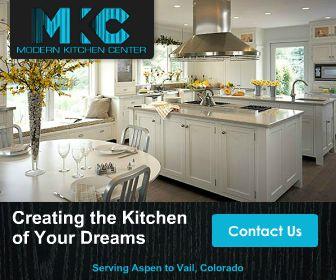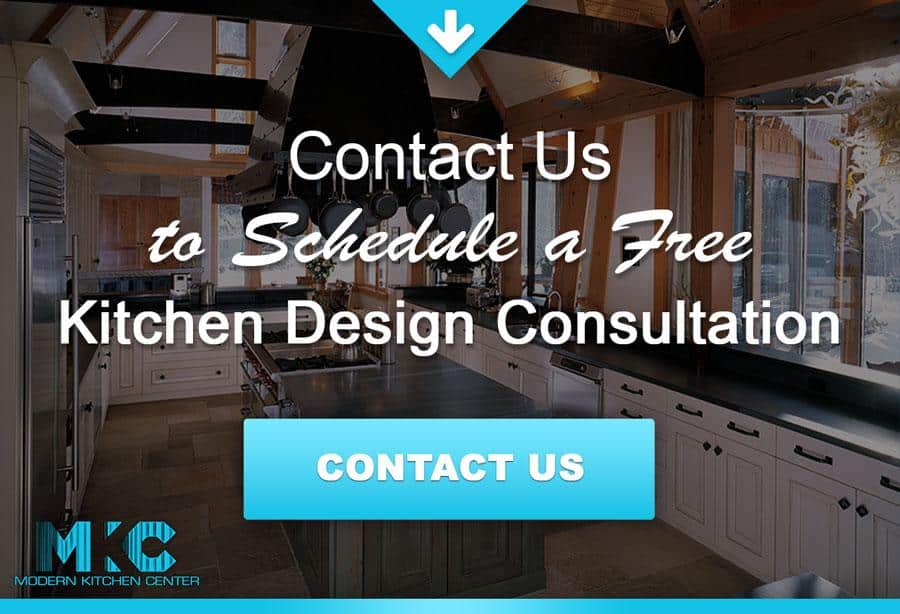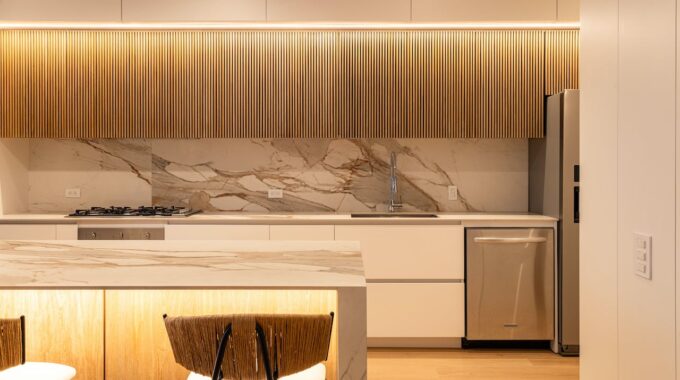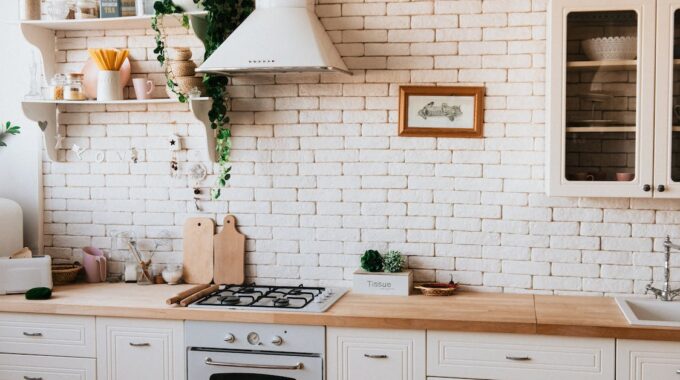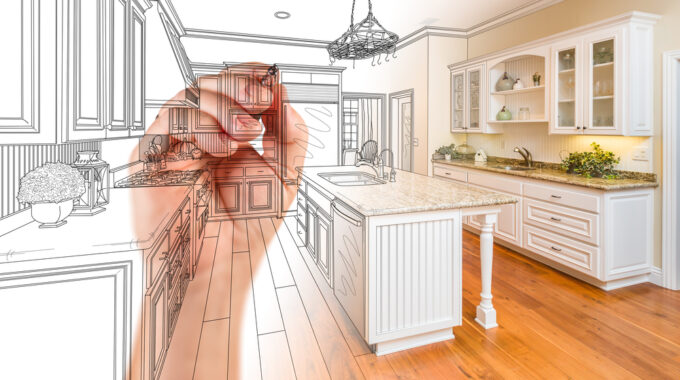
Is it Time? Common Indicators Your Kitchen Needs a Makeover
The kitchen is often called the ‘heart of the home’ and for good reason. It is not just a place where meals are cooked and dishes washed. In fact, it is a space of culinary expressions, a hub of family gatherings, and a nexus where memories and laughter brews. From the first cup of coffee in the morning to our nighttime snacking exploits, the kitchen plays a vital role in our everyday lives.
But, like all things, kitchens, too, have an expiry date. What was a cutting-edge kitchen less than a decade ago may now be a shadow of an era long bygone. After all, our lifestyle needs, diets, culinary habits, and technology all change with the times. For instance, a kitchen designed for a newlywed couple may be ill-equipped to handle the bustling activities of a family five or ten years down the road. Many home appliances and floor plans that were once considered revolutionary may have become obsolete now, whereas aesthetics that used to be at the pinnacle of fashion now perhaps appear dated.
Homeowners must acknowledge and adapt to these shifts. Beyond the aesthetics, you must also assess your kitchen for functionality, safety, and efficiency. This begs the question: is it time for a makeover? Is your kitchen still in line with your current lifestyle and requirements? Or is it now an echo of how things used to be? The indicators we cover in this blog will help you answer these vital questions.
Signs That Your Kitchen Needs a Makeover
Safety Concerns
a) Damaged Countertops and Floors
While a kitchen’s visual appeal is important, what is even more crucial is the safety it offers to its users. Imagine cutting vegetables or kneading dough on a tabletop with gaps or uneven surfaces. Not only does it become harder to perform tasks, but you also have to deal with the risk of water seeping in and causing mold growth or structural damage. Cracks and chips can harbor bacteria and pose health risks.
Floors, too, are not immune to this scrutiny. A cracked or uneven kitchen floor is a tripping danger –every step on such a floor, especially with damp feet or while carrying hot pots and pans, is an accident waiting to happen.
b) Outdated Electrical Systems
The modern kitchen is an assortment of machines, ranging from blenders to microwaves to coffee ovens. Traditional kitchens, which were designed for fewer gadgets, may not have enough electrical outlets. This often leads to households having to rely excessively on extension cords, which creates a fire hazard.
Old electrical wiring may also be ill-equipped to handle the power demands of modern appliances, risking not just the appliance itself but also increasing the likelihood of electrical fires.
Updating the electrical systems in the kitchen, then, is not only a matter of convenience but also one of safety.
c) Poor Ventilation
Ventilation is the unsung hero of a functional kitchen. It is in charge of keeping the kitchen free of smoke, odor, and moisture.
However, exhaust fans can become obstructed or ineffective over time. A kitchen with inadequate ventilation traps smoke and cooking odors. Not only does this affect the indoor air quality, making inhabitants uncomfortable, but it can also lead to the growth of mold and mildew.
And, if you’ve ever tried to get rid of the strong smell of certain dishes, you probably appreciate the importance of a properly-functioning exhaust system.
Functionality and Flow
a) Inefficient Layout
Every kitchen has a rhythm, a flow that dictates the ease with which you can move from one task to another. The “work triangle” – an imaginary line drawn between the sink, stove, and refrigerator – is central to this flow. These are the three most used locations in a kitchen, and having a clear path between them is critical for efficient cooking.
If you’re continually bumping into furniture, or if the positioning of these essential areas is disrupted, it is a clear sign that your kitchen layout is less than optimal. It is not just about the space but how effectively you use that space.
b) Insufficient Storage
A kitchen with insufficient storage is a recipe for disaster. When pots, pans, utensils, and ingredients begin to pile up on worktops or are carelessly packed away in cabinets, they not only detract from the aesthetic appeal but also from the functionality.
Clutter not only hinders the cooking process, but can also lead to misplaced items and waste. From spatulas to spice canisters, a well-designed kitchen should have room for everything.
c) Your Needs Have Changed
Kitchens are not static entities; they must evolve in response to the shifting dynamics of the people who use them. A compact kitchenette, ideal for a single professional, may fail to meet may not be able to meet the needs of a growing family. Similarly, if you’ve just discovered a passion for gourmet cooking or baking, the basic stove and limited counter space that once looked sufficient may now spell restrictive.
Recognizing and adapting to these changing requirements is key to ensuring that cooking remains a pleasure and not a chore for you.
Aesthetic and Design Flaws
a) Outdated Look
Every era has its distinct style, whether it’s the retro vibes of the ’60s, the earthy tones of the ’70s, or the pastel palettes of the ’80s. While revisiting these styles may feel nostalgic, a kitchen that belongs to a different decade may find it hard to blend in with modern tastes.
Besides affecting its visual appearance, an outdated kitchen may also bring down the value of your home. Modern home buyers and visitors tend to place a premium on kitchens that are modern, fresh, and in line with contemporary trends.
b) Fading or Peeling Paint
From steamy stews to delightful desserts, your kitchen walls and cabinets testify to the cooking stories crafted over the years. However, as the paint begins to fade, peel, or chip, it not only reduces the aesthetic appeal but also exposes underlying surfaces to moisture or cooking grime.
Thus, fresh paint not only brightens up a space but also serves as a protective coating. Faded paint can make a kitchen look neglected and unwelcoming.
c) Inconsistent Themes
A mishmash of design elements tends to produce visual chaos. Consider pairing rustic wooden cabinets with ultra-modern chrome fixtures, or a clean, minimalist countertop with elaborate, vintage knobs. These discrepancies can interrupt the visual flow of the space, creating a sense of disconnect.
Contrary to what some people believe, a cohesive theme does not equate to monotony; instead, it is about having elements that that complement and enhance each other, painting a harmonious design narrative.
d) Unsightly Stains and Discolorations
Certain sections of the kitchen, particularly countertops and backsplashes, may develop stains from food spills, water, or chemicals over time. While some of these are removable, stubborn stains or discolorations become eyesores. They not only tarnish the kitchen’s visual appeal but they can also be indicative of more serious problems like water damage or mold. Thus, apart from aesthetics, these stains also pose hygiene concerns.
Wear and Tear
a) Broken Cabinet Doors or Drawers
Cabinets and drawers house everything from dishes and utensils to seasonings and pantry essentials. Over time, repeated (and sometimes excessive) use can cause these to wear out. Broken handles, misaligned doors, and jammed drawers are not just mere annoyances but clearly indicate that the infrastructure of the kitchen is deteriorating.
Failure to treat these issues on time may lead to further complications, such as items becoming inaccessible or the damage spreading to other parts of the cabinet.
b) Leaky Faucets or Damaged Sinks
Water is the lifeblood of any kitchen, which is why, it is vital to ensure its efficient use and proper disposal. A leaking faucet not only wastes water but can also contribute to higher utility bills. Although it may come across as a minor issue, continuous leaks over time can cause water damage, mold, and even structural issues.
Similarly, a broken sink, whether it has cracks, chips, or stubborn stains, could jeopardize kitchen hygiene. In addition, they can become bacterial breeding grounds and cause drainage issues.
c) Outdated or Malfunctioning Appliances
From the humble toaster to the mighty refrigerator, kitchen appliances play a crucial role in our daily culinary adventures. However, like any other gadget, they do not last forever. Outdated appliances not only become inefficient but also present safety hazards. For example, an old microwave may consume too much power, or an aged refrigerator may lose its cooling efficacy and cause food spoilage.
Upgrading to newer, energy-efficient models not only improves the functioning of the kitchen, but also adds to energy conservation and safety.
Modern Necessities
a) Lack of Modern Amenities
The contemporary kitchen is more than simply a place to cook; it’s a multipurpose space outfitted with amenities designed to improve space and efficiency. Modern amenities, such as pull-out trash bins and built-in spice racks, help enhance the culinary experience. A kitchen without these conveniences may appear outdated and could fail to meet the needs of the modern chef.
The absence of such amenities can result in chaos, lower productivity, and overall frustration.
b) Energy Efficiency
Increased global awareness of sustainability has led to an emphasis on energy-efficient homes. With a wide range of appliances, the kitchen is a significant power consumer. If your kitchen houses outdated appliances, not only will they be soaking up more power but also adding to your utility costs.
On the other hand, modern appliances are designed with a focus on energy efficiency. They lower your carbon footprint, bring down utility bills, and are often accompanied by other efficiency-boosting features.
A kitchen that has not embraced energy efficiency may appear out of date and might be a drain on resources.
c) Technology Incorporation
We live in an age where technology permeates every aspect of life, not excluding the kitchen. From smart refrigerators that can monitor expiration dates to voice-activated ovens and smartphone-controlled lighting systems, technology continues to redefine the culinary space. It is not just about the flash; it is about making this space safe, efficient, and comfortable.
A kitchen that lacks technological integration can appear antiquated and may not provide the convenience that modern users have come to expect.
The Emotional Indicator
a) Falling Out of Love
Similar to other relationships in our lives, our connection to our kitchens can also ebb and flow. Maybe it is the dated wallpaper that once emanated charm but now feels bland. Or perhaps the layout feels out of sync with your current lifestyle.
When entering the kitchen fails to spark joy, encourage you to experiment with a recipe, or gather the family for a meal, it is a sign of a loosening emotional thread. A space that was once the beating heart of your home now feels like just another room.
b) The Desire for a Fresh Start
Life is a journey marked by both large and small changes. Milestones like a new career, the birth of a child, or even personal transformations can ignite the desire for a fresh start. The kitchen, being so central to our daily lives, often serves as a blank canvas for these new beginnings. A desire to remodel the kitchen can represent larger goals or improvements you want to see in your life.
It may not be about fixing what’s broken or obsolete; it may be about creating a space that reflects the new you.
Conclusion on Signs Your Kitchen Needs a Makeover
Our kitchens are storytellers. They are witnesses to our early-morning rituals, weekend brunches, festive preparations, and countless heart-to-heart conversations over the countertop. It would, therefore, not be wrong to label them the pulse of a home.
But, like any other space, they are prone to aging, evolution, and falling out of sync with our current needs or emotions. Whether it is the visible signs of wear-and-tear, the lack of modern amenities, or just the craving for a fresh start, these signs are how our homes communicate with us.
Acknowledging and acting upon these signs is not only about home improvement, but about rejuvenating a space that holds immense sentimental and functional value. A kitchen makeover is not an investment in bricks, appliances, or paint, but one in memories, experiences, and the numerous culinary experiences that await us. It is about ensuring that the heart of your home stays alive and pumping.
Contact Modern Kitchen Center in Glenwood Springs, Colorado today to schedule your consultation!



